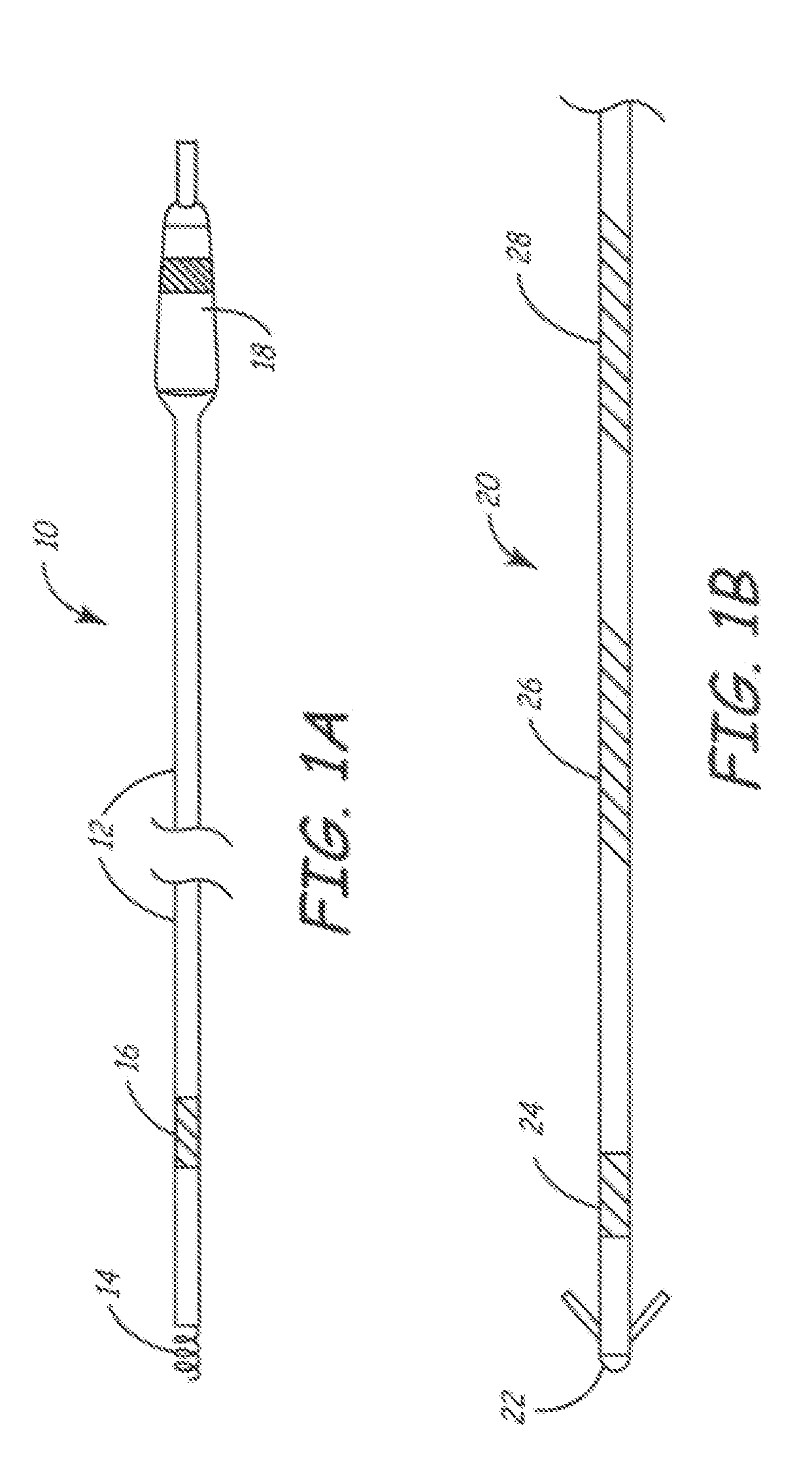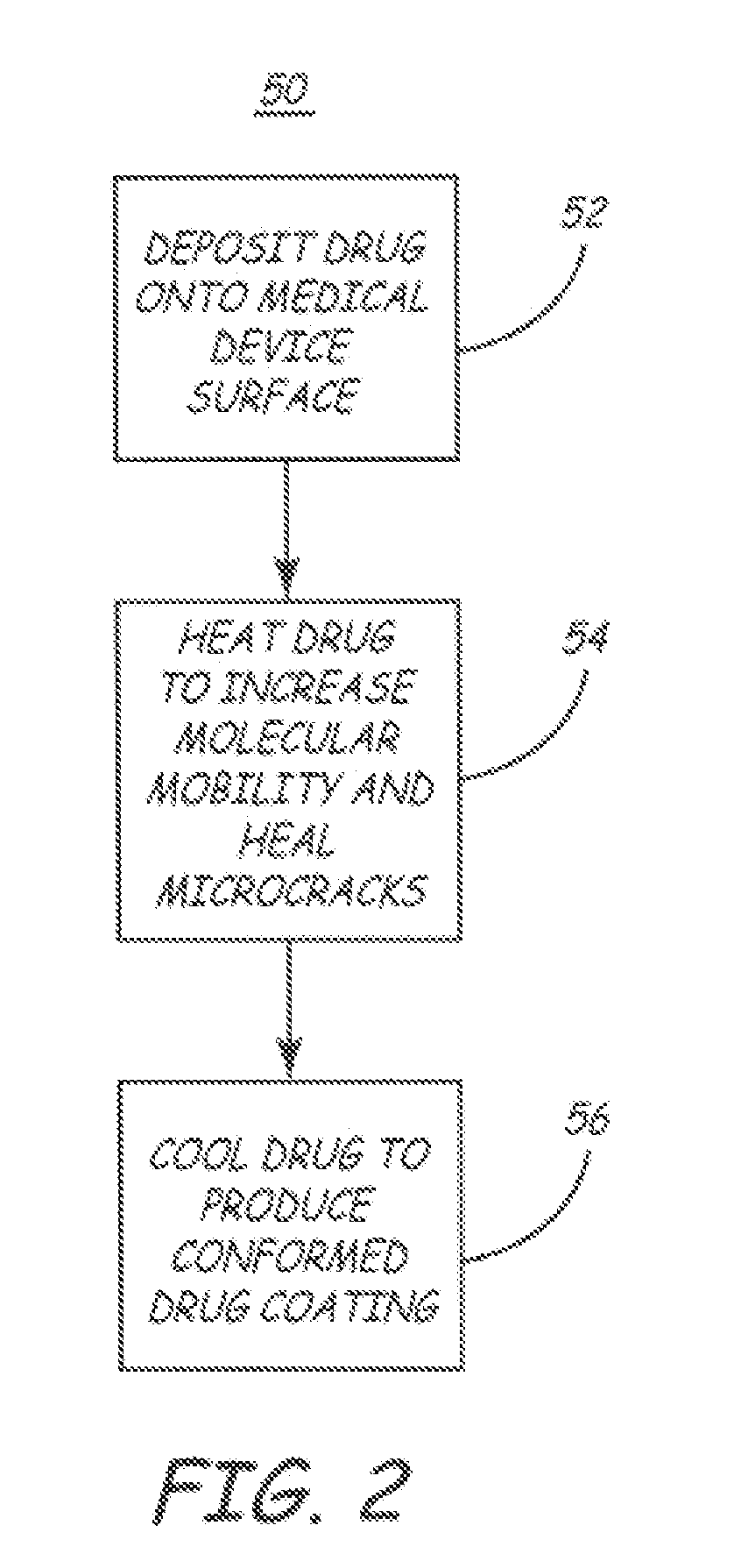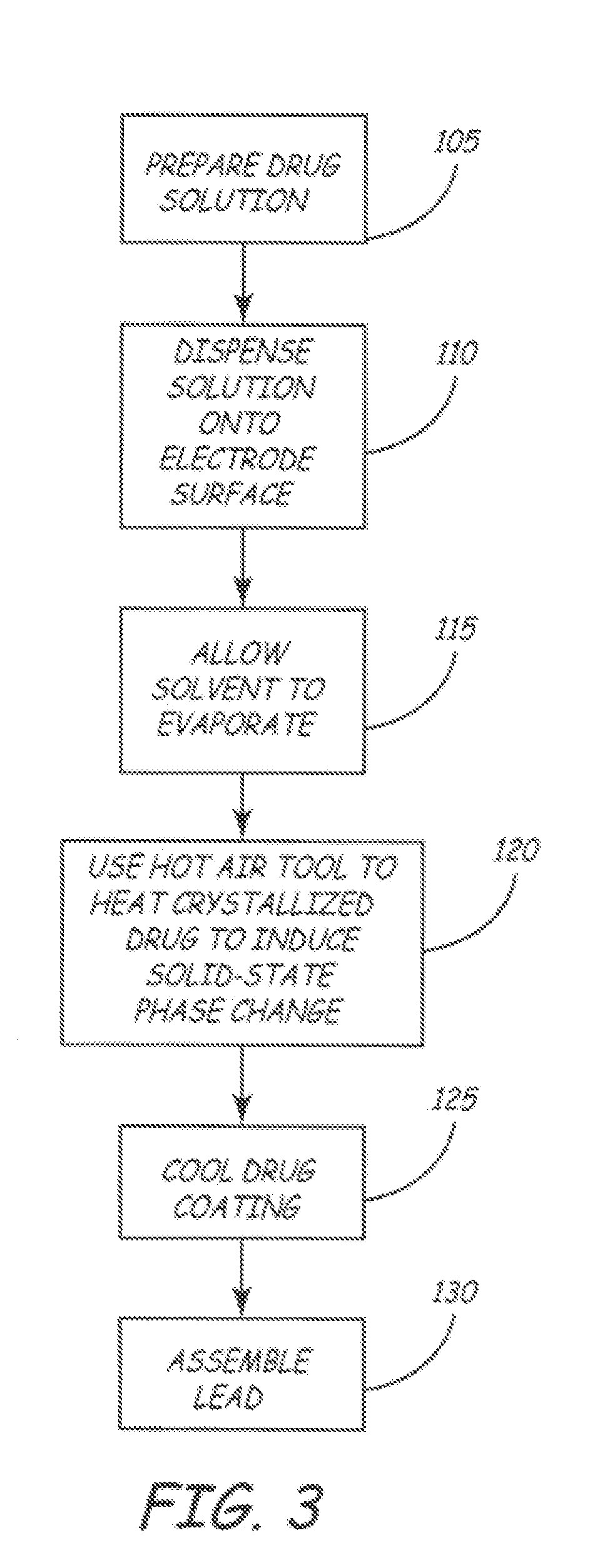Method for applying a drug coating to a medical device
a technology for medical devices and coatings, applied in the field of medical devices that can be applied to medical devices, prostheses, therapy, etc., can solve the problems of apparent increase in adhesion, and achieve the effects of reducing the defect density of the drug coating, being well attached, and being durabl
- Summary
- Abstract
- Description
- Claims
- Application Information
AI Technical Summary
Benefits of technology
Problems solved by technology
Method used
Image
Examples
Embodiment Construction
[0019]The present invention is aimed at providing a medical electrical lead having a drug-coated electrode surface and a method for manufacture that allows the amount of drug present and the resulting surface morphology of the drug coating to be controlled and reproducible.
[0020]The inventor has found that under controlled conditions, a drug coating applied to an electrode surface of a medical lead may be heated to induce a solid-state phase change that results in micro-crack healing of the inter-crystalline grain boundaries and a transition from an opaque, relatively fragile coating to a translucent, conformable coating, without degradation of the drug. Thermally induced re-organization of the crystalline structure produces a conformable coating that has a much lower defect density than its precursor, and consequently yields higher effective adhesion and durability than the coating that was deposited from solution. Prior attempts at heating a drug coating to create a smooth, more d...
PUM
 Login to View More
Login to View More Abstract
Description
Claims
Application Information
 Login to View More
Login to View More - R&D
- Intellectual Property
- Life Sciences
- Materials
- Tech Scout
- Unparalleled Data Quality
- Higher Quality Content
- 60% Fewer Hallucinations
Browse by: Latest US Patents, China's latest patents, Technical Efficacy Thesaurus, Application Domain, Technology Topic, Popular Technical Reports.
© 2025 PatSnap. All rights reserved.Legal|Privacy policy|Modern Slavery Act Transparency Statement|Sitemap|About US| Contact US: help@patsnap.com



